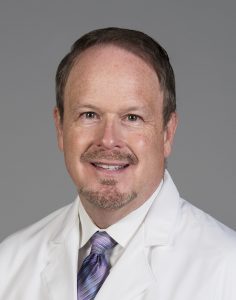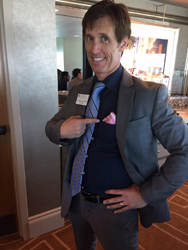The transition of the Summa Health’s emergency department contract generated much discussion in the emergency medicine community. ACEP Now brought you exclusive interviews in January, getting the facts and perspectives from the groups involved—Summa Emergency Associates (SEA), US Acute Care Solutions (USACS), and the Summa Health. Without revisiting the unfortunate consequences of the failed negotiation and the associated challenges and negative impact that transpired, most agree that, for a variety of reasons, the transition was far less than optimal.
Explore This Issue
ACEP Now: Vol 36 – No 10 – October 2017Providing a forum for the discussion of important issues in emergency medicine, ACEP Now has kept its collective finger on the pulse of this situation and will update our readership with timely and relevant information as we receive it. Below is a continuation of our discussion on this very important topic. There has been a leadership change in Summa Health’s department of emergency medicine aimed at rebuilding the department’s reputation internally and with the community, and, perhaps most importantly, the reputation of the emergency medicine residency training program.
ACEP Now’s Medical Editor in Chief Kevin Klauer, DO, EJD, FACEP, recently sat down with David Seaberg, MD, CPE, FACEP, chairman of the department of emergency medicine at Summa Health in Akron, Ohio, and executive vice president of academic emergency departments for USACS in Canton, Ohio, to discuss the future of Summa Health’s emergency medicine program. Here are some highlights from their conversation, edited for length and clarity.
KK: Tell us about your background and experience.
DS: I was originally chair of the University of Florida in 2000. I left to be the inaugural dean of the University of Tennessee College of Medicine in Chattanooga, and then we started a department and residency the next year. I stepped down as dean in 2015 and continued as chair until I left for Summa on July 31, 2017. Also during that time, I was a senior vice president for the Erlanger Health System in charge of physician integration for three years. Formerly, I served as President of ACEP from 2011 to 2012.
KK: Compared to the other five programs you’ve started, how does this challenge stack up to the others? Do you think this will be relatively light work for a guy with your pedigree or is this the challenge of a lifetime?
DS: I think it’s definitely going to be challenging. Starting a residency program is always difficult. There’s still some sensitivity in the community about emergency medicine and currently the institution is on probation. I think there will be some certain challenges to get over some of the stigma from closing a program. There will certainly be some challenges in recruiting here, but I’m confident that with my experience of doing this and my ability, I hope to attract good faculty here. With the supportive environment at Summa Health and within USACS, I think this is very doable. Our goal is to get our program information form done by this next summer so we can be in the match for July 2019.
KK: Does the Accreditation Council for Graduate Medical Education and the Residency Review Committee know that this is in the works?
DS: I don’t know if they know or not. We do have to wait for our institutional survey report, which will come out in October. Certainly, the timeline could get delayed if there are some restrictions put in there, but again, I’ve been in this business for 30 years, and with my experience, I can tell you there is an extremely supportive environment at Summa Health. I think it’s as good as any environment that I helped start.
KK: What do you think the biggest challenges will be and the biggest opportunities?
DS: I think first, Kevin, we need to restore and enhance the reputation of Summa Emergency Medicine and improve the care for our patients. I’m looking at it from three areas.
The first is recruitment. We need, to continue to recruit a stable workforce that lives in the Akron area and is committed to Summa and Summa Emergency Medicine. Akron is a beautiful area of the country but not, as you know, necessarily the easiest to recruit to. Even in my seven weeks here, we’ve signed seven physicians already.
Second, we need to look at improving our patient care metrics. Our “left without being seen” rates were too high. We implemented a physician in triage program, and now our “left without being seen” is about 0.5 percent. Our length of stay is decreasing. We’re working several different areas, including point of care testing, but we need to improve our patient care metrics.
Lastly, we need to enhance our community engagement. We’re going to have an open house in October for the medical staff to meet our physicians, since a lot of them are new. We are reinstituting our emergency medical services training and going out and meeting the EMS agencies. We’re meeting with other physician groups in town, other hospitals, other community resources; we need to reestablish ourselves within the community. The group previously had been here 30-plus years. It’s going to take some time. From an academic standpoint, we already talked about restarting the residency program. I’m going to have to bring in a program director and a research director.
KK: What is the opportunity for you and what you think you can create?
DS: I think taking a program such as Summa EM and rebuilding that and making it an outstanding residency program will be a nice part of my legacy, but my long term goal is to use what we’re developing at Summa as a potential model within USACS to develop more academic emergency departments. I think this is a potential model that could have some real validity in helping grow emergency medicine in the future.
KK: Can you clarify your relationship with Summa compared to your relationship with USACS? Do you work for both?
DS: I’m actually employed by USACS. There is a contract that USACS has with Summa to support these programs and there are some funds from Summa to help support the academic environment, which all hospitals do that want to develop residency programs. I am a direct employee of USACS and appointed as chair at Summa, I had to go to the medical staff leadership, through a search committee, and then be appointed by the board.
KK: The emergency department transition that occurred recently between SEA and USACS has been discussed a lot. This had to weigh heavily on you when you were making your decision to develop a relationship with USACS.
DS: I was like other people reading about this in ACEP Now. It was a lose, lose, lose, lose for almost everyone involved and the greater tragedy is that a residency was shut down because of that. An institution, a very fine institution, was put on probation. I felt I had the skills to come in here to help rebuild that. I’m not dwelling, and we’re not dwelling on the past. It really was, in my opinion, a contract situation that went very poorly. The hospital leadership that negotiated that are no longer here. Obviously, SEA is not here. Obviously, the residency is not here. It certainly has been costly from USACS’s perspective to take over a program with such short notice. I think this will be a win-win for the community, for Summa, and for emergency medicine in the long run.
KK: Are you considering or having conversations about bringing anyone from SEA back?
DS: Well, you hope that time heals all wounds. I’m not convinced there’s been enough time yet, but yes, I am reaching out. I’ve reached out to several members. Like you said, there’s some very outstanding people in that group. They ran a great residency program; I would certainly look at them.
KK: I think it’s very wise on Summa’s part and USACS’s part to bring in a leader like you and somebody who wasn’t involved with the contract acquisition.
DS: They needed a proven academic leader to come in here, and I think my experience fits that bill. I think it will really help them move forward now. It’s a reset for Summa EM.
KK: With respect to all that disruption, has there been any positivity from those who are viewing this from the outside or potential skepticism about you coming in?
DS: I think initially there’s some distrust with some of the other specialties that frankly have good friends within the old group and other departments. They want EM to succeed, but wasn’t exactly sure about who I was, and there’s still some sensitivity around USACS taking over this contract, but I think we’ve shown them that we are moving in the right direction. I’ve been warmly embraced after maybe some initial skepticism. It was pretty remarkable that USACS could come in on short notice and keep the emergency department open. Obviously, we’re not exactly where we need to be. We need to start integrating with the community and get a stable workforce that learns the Summa processes. As you go to any new hospital, how that system operates is always one of the hardest things to learn. It takes time, but I think we are getting there.
KK: You said earlier that a lot of the relationships have changed and the individuals who negotiated or attempted to negotiate that contract are no longer here. What has changed at Summa or in other relationships from a leadership standpoint?
DS: The leaders of the organization and the CEO are now gone. There’s a new CEO and other administrative team, and I think they really did learn a lot in this process. I think, as we move forward, even as a company (USACS), that if we do more academic contracts, were going to have to include some specific language that, should you lose the contract, which is a possibility, that there are protections in place for the residency program. Non-competes for the emergency physicians, a six-months out period. Somewhere where there can be a transition so that residency programs don’t get shut down, because that just should never happen. We are working through legal to get some language that everybody’s comfortable with in order to protect future residency programs.
KK: Are the director of medical education and the CMO still in their roles or did those transition also?
DS: The CMO has transitioned. The head of graduate medical education is still here and, I think, doing an excellent job. The president of the organization is Dave Custodio, who is an emergency physician, and they’ve actually gotten rid of the system CMO role and now at Summa they have basically a chief medical officer of medical services and the CMO of surgical services.
KK: One final question I have for you is how have they embraced your style and swagger at Summa Health—in particular, your extensive collection of pocket squares and matching ties? Whatever you build needs to have your DNA in it, which includes a pocket square.
DS: I think you have one of my pocket squares. When I left the ACEP Board, I gave you one of my pocket squares.
KK: You did, and for a period of about three to four months, I had custody of one of your favorites that showed up in multiple cities and in multiple people’s pockets. Dave, you are known for your academic excellence, outstanding leadership, and, of course, your commitment to the pocket square/tie combination. Long live the pocket square! I wish you all the best. Good luck with your new roles.
Disclosure: Dr. Klauer was formerly employed by EMP from 1999 to 2014. He has no current financial or other relationship with EMP and has no current or former relationship with USACS.
Pages: 1 2 3 | Multi-Page








No Responses to “A Fresh Start at Summa’s Emergency Department”